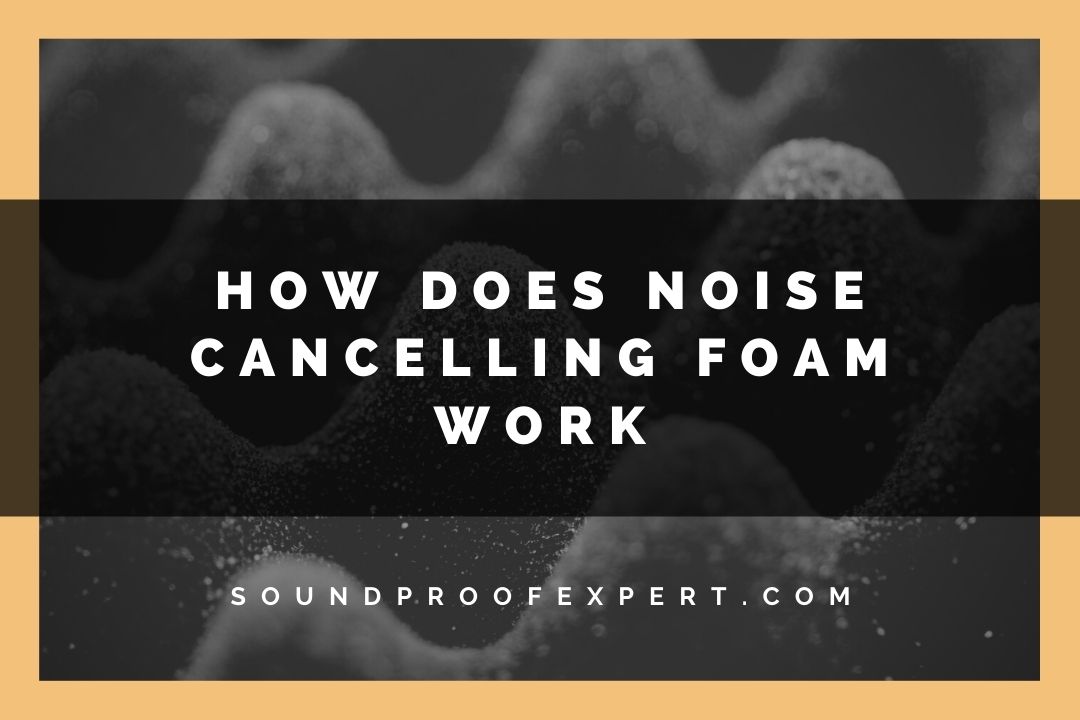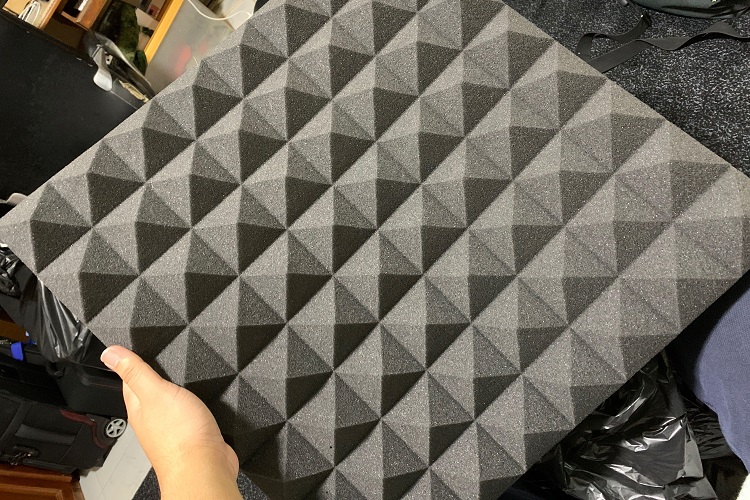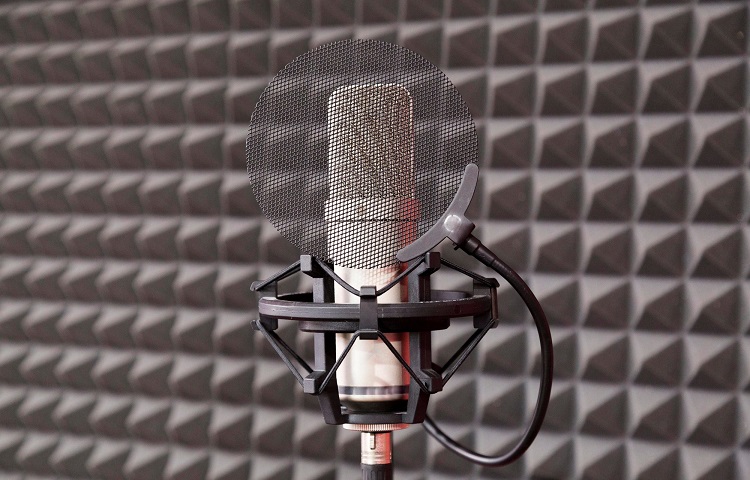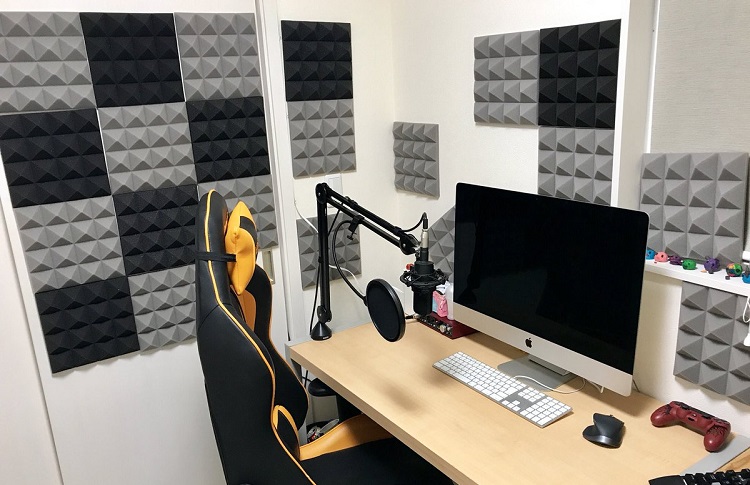
Have you had trouble focusing on work because something just kept making noise around you?
Were you troubled even more when you found out that the source of the noise is your electronic appliance? We’ve all been there.
There is one excellent solution at your disposal for this anomaly – noise-canceling foam.
You can easily dampen all the sounds around you by covering the noisy object with foam. You’ll find it commonly used in sound recording studios for obtaining clean and clear sound bites. That is because foam is a lousy conductor of sound and acts as a gatekeeper for sound.
While you can pick up a pair of noise-canceling headphones to keep your work going around the noise, they are significantly more expensive than foam. Foam is a passive noise canceling tool that you can use anywhere you want to.
Let’s dive into all things foam – what it is, where you can get it, how you can use it, and why it works.
What is noise-canceling foam?
Noise-canceling foam, also known as acoustic foam in music circles, is used on walls, doors, and other parts of a room for noise reduction or control.
It is generally made of polyurethane or melamine foam and is used to cut down on vibrations, noise, and echoes. If you go to a large auditorium, you will notice that the walls and the ceiling are covered with some spongy material.
That material is acoustic foam. Since an auditorium, like a hall or arena, is often weary to sounds at a loud volume, it is prone to echo. Thanks to this foam, the room is devoid of echoes, and everyone can hear the sounds with clarity and precision.
Noise-canceling foam does not exactly block the sound from entering a space. Instead, it absorbs excess vibrations in the sound wave and paves the way for clear sound. It means that if a person is standing outside a room with acoustic foam inside it, they will hear everything going on inside, but at a low volume.
You must have seen egg-crates covering particular walls of makeshift studios. These crates act as noise-canceling foam. They absorb some sound waves so that the neighbors are not disturbed by your Avante-Garde metal music.
How does foam cancel noise?

The devil is in this question. Foam, instead of canceling noise, absorbs it. Sound is an energy, a wave.
When you shout in your room, sound waves reflect off of that wall. Walls layered with acoustic foam will not reflect sound waves. Instead, they will absorb the waves, and the person in the next room will hear your shouting in a muffled manner.
Sound is also an energy. And the general principle of energy states that it can shift forms, but it cannot disappear. So, when you shout at a wall and throw your sound energy at it, the energy has to go somewhere, right? Sound energy from your shout is absorbed into the acoustic foam and converted to heat.
Strictly speaking in experimental physics terms, if you shout loud enough in a room covered with noise-canceling foam, you can make yourself sweat.
Noise-canceling foam is a product that will absorb echoes within a room. It is used to improve the sound quality inside the room where it is installed.
Moving back to physics terms, noise-canceling foam reduces the amplitude of sound waves that come into contact with it, generating a muffled sound and preventing echoes.
Where can you get noise-canceling foam?
If you have eg-crates at home, you can line them up on your wall as a makeshift foam.
This trick is relatively common among novice sound engineers and music producers. If you are looking for foam, you can find it on most e-commerce websites for a reasonable price. Decorative absorption foam is also available on most marketplaces.
You can also address your local hardware shop for the same. If you are looking to reduce the echoes in your room at home, you don’t need to cover up entire walls. You can fit small foam pieces in corners where the sound gets reflected more to solve your echo woes.
Noise-canceling foam is also available in eco-friendly variants for those who want to cater to their love for the environment. If you are not satisfied with regular acoustic foam, you can try Wood Wool. It is cementitious wood-fiber panels that add an aesthetic touch to your room.
The Aquarium Conundrum

Problems of noise can be categorized into two – you either want to reduce echoes or block sound completely.
There are different solutions for both these issues. The answer lies in a peculiar conundrum.
If you were building an aquarium, what would you use to hold the water? Would you use walls made of sponges?
The obvious answer is ‘no.’ The same principle lies in soundproofing a room. The water in an aquarium can be equated to sound within a room. Walls of sponges are a metaphor for walls covered with acoustic foam.
As you can guess, with walls of sponge, the contents of the room will spill. So, if you want to reduce the noise that gets out of a room or reduce echoes within a room, you can use noise-canceling foam.
However, if you are looking for material that will block sound completely, you have to start from scratch. Sound Blocking material has to be present inside the room walls – as a part of its construction.
Using dense and heavy materials in walls will prevent it from leaking sound outside. Dense, thick walls act as good reflectors of sound – sound bounces back into the room and refuses to leave.
Where can you use noise-canceling foam?

If you watched the movie ‘A Quiet Place’ (and its sequel) with a keen eye, you would notice that the family in question tries to soundproof their house with egg crates to prevent any noise from echoing around.
You can use the same for your home studio (where it isn’t a matter of life and death).
It would be best if you thought before placing acoustic foam in your room – make sure you cover spots that are more prone to echoes first. Strategically placing acoustic foam in your room will cut your costs and give you a room with clear sound.
Very often, noise-canceling foam tiles will include features like pyramids, cones, or wedges. These obscure shapes ensure that reflected sound hits the foam repeatedly till it dissipates, making the room sonically superior.
This foam commonly deals with mid and high frequencies on the sound spectrum. Thicker strips or tiles of foam are used in rooms to cover the lower frequencies of sound. These are called ‘bass traps’ and can be commonly seen in music recording studios.
Noise-canceling foam is used in all those spaces that require sound to be clear and precise. All auditoriums, lecture halls, studios, recording booths, etc., will feature noise-canceling foams that will cancel echoes, remove unnecessary reverberations, and render a clear sound.
Large rooms that are host to reverberative surfaces also add noise-canceling foam to their walls. For example, churches and synagogues which are privy to sermons will have a significant amount of soundproofing done to prevent sound from echoing.
If you are looking to solve echoing problems, noise-canceling foam is your best friend. However, if you want to block sound completely, you will have to think of something thicker and denser to add inside your walls.
